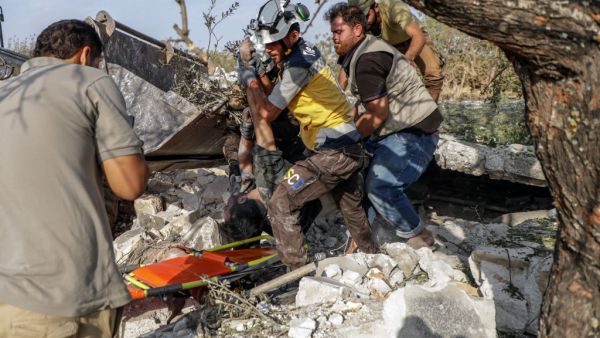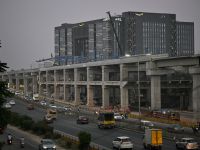Opposition groups and anti-regime armed groups in Syria said Wednesday that they had downed an Assad regime warplane in the Idlib de-escalation zone of northwestern Syria.
The Fatah al-Mubin -- joint operations room of the opposition and anti-regime armed groups -- said that the regime was trying to hit rural parts of northern Hama and southern Idlib with the Su-22 warplane.
Muhammad Rashid from Nasir Army, a faction of the National Liberation Front in Idlib, told Anadolu Agency that the fighter jet was targeted by anti-aircraft units over the town of al-Tamanah in southern Idlib.
Rashid also claimed that the plane’s pilot was captured alive after he landed in al-Tamanah by parachute.
In December 2017, an Assad regime L-39 fighter jet was also downed by the Free Idlib Army, a faction of the Free Syrian Army (FSA).
Regime forces backed by Russia have proceeded closer to Idlib’s town of Khan Sheikhoun, where the regime carried out a chemical weapon massacre and continues to launch intense air and land attacks despite the Astana agreements.
They took control of the town of Habit and Sukeik Hill, in southern Idlib, from the FSA and then captured the strategically important Tal Tari Hill in the village of Kefer Ain.
With such actions, regime forces came within 5.4 kilometers (3.3 miles) of the town from the west and 11 km (6.8 miles) from the east.
{"preview_thumbnail":"https://cdn.flowplayer.com/6684a05f-6468-4ecd-87d5-a748773282a3/i/v-i-7…","video_id":"70e2033b-f4ab-4f36-9722-21fcf0fe4070","player_id":"8ca46225-42a2-4245-9c20-7850ae937431","provider":"flowplayer","video":"Imran Khan Accuses India of Planning Military Onslaught on Kashmir"}
Idlib de-escalation zone
After a meeting last September in Sochi, Russia between Turkish President Recep Tayyip Erdogan and his Russian counterpart Vladimir Putin, the two sides agreed to set up a demilitarized zone -- in which acts of aggression are expressly prohibited -- in Idlib.
Under the deal, opposition groups in Idlib will remain in areas where they are already present, while Russia and Turkey will carry out joint patrols in the area to prevent a resumption of fighting.
On Oct. 10, the Turkish Defense Ministry announced that the Syrian opposition and other anti-regime groups had completed the withdrawal of heavy weapons from the Idlib demilitarized zone.
Despite the cease-fire agreement, the Assad regime and its allies have continued their low-intensity attacks on Idlib’s de-escalation zone.
The conflict in Syria began in 2011 when the Assad regime cracked down on demonstrators with unexpected ferocity.
This article has been adapted from its original source.








